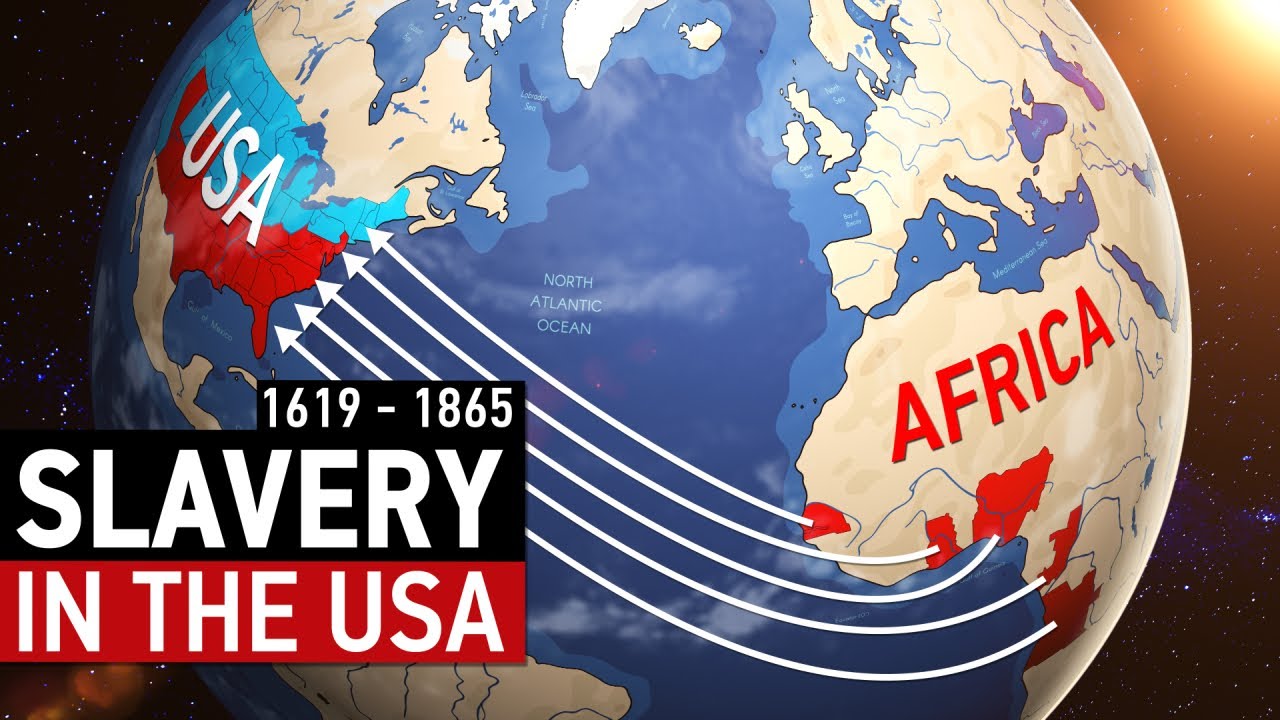In 1619, in a port near Jamestown, 20 African slaves first set foot on Virginia from the pirate ship «White Lion». So the history of slavery in the territory of the future US began. It lasted more than 200 years and was full of bitter injustice, racism, brutal killings, horrific tortures, merciless exploitation, bloody sweat, and untold suffering of disenfranchised slaves. Ways and conditions of slaves transporting. The main economic activity of the British in North America was agriculture, which in the late 17th century occupied more than 82% of the colonists.
At that time, the most profitable was the cultivation of tobacco. The profitability of this business was about 400%. However, the difficult working conditions on the tobacco plantations discouraged white employees. The Indians, too, didn’t want to be involved in the cultivation of this product. For this reason, the owners of the estates decided to eliminate the shortage of workers with the help of imported slaves from Tropical Africa.
In the early 16th century, European colonialist elites, obsessed with religious superiority and cave xenophobia, perceived other civilizations at best as second-class people who needed the tutelage of white Christians.
At worst, they were perceived as members of a different species. These inhuman delusions and an incredible thirst for riches justified the enslavement of people of other races and religions. Spanish, Portuguese, English, and Dutch slavers most often took slaves from the west coast of Africa. Africans were mostly captured by enemy local chiefs during war or looting.
The chiefs then sold them to Europeans.
Sometimes the slavers themselves organized conquest expeditions deep into the continent to take people, gold, and ivory. In the mid-17th century, the price of one slave on the coast of modern Côte d’Ivoire averaged 100 halons of rum or 2-4 pounds sterling. In the New World, its price increased 5-6 times. The main centers of the slave trade in North America were New York, Boston, Charleston, and New Orleans.
The hold of the slave ships was unsanitary, with cruel punishments, and a lack of space, oxygen, and food. This was the cause of death for 21% to 65% of prisoners. High-profit margins encouraged traffickers to increase human trafficking. Therefore, in 1751-1775, more than 84,000 imprisoned Africans were officially brought to the territory of 13 colonies. In 1801-1807, more than 109,000 slaves were brought into the United States.
In total, more than 597,000 slaves were brought from Africa. 26% of these victims were from the modern Congo and Angola, 24% from Nigeria, 14% from Ghana, and 13% from Senegal and the Gambia. Position of the enslaved Africans Local governments in the English colonies of North America also included slave owners. The latter lobbied to legalize slavery in the colonies faster than in England itself.
Slavery was legalized in Massachusetts in 1641, legalized in Virginia in 1661, and legalized in Maryland in 1664.
In New Jersey, the final legal formalization of slavery occurred as early as 1704. In the United States colonies in order to maintain barriers between white servants and black slaves racism was cultivated and strict racial boundaries were created. In 1639, Virginia passed a law that provided imprisonment and other forms of punishment for those white people who slept together, congregated, married, or was seen having sexual intercourse with the representatives of the other races. Maryland passed similar regulations in 1661, and Carolina in 1671. However, these laws did not apply to wealthy slaveholders and their clients who raped or encouraged sexual interaction with defenseless black slaves.
African slaves were left with no power. Under the laws of most English colonies in the early 18th century, slavers were allowed to carry out any physical violence and use bloody torture on their slaves or even execute them at their own discretion.
The movement of slaves was so limited that in Virginia any black slave could be quartered if he appeared on the street after 9 pm. Sometimes relatives or children were punished for their parents’ guilt by having their fingers cut off or their ears cut off. Slaves in the English colonies were akin to pets or tools by which their owners earned their capital.
In the southern colonies, slaves mostly worked hard under unbearable conditions in the hot sun on cotton or tobacco plantations. The working day could be from 14 to 18 hours, and every attempt at unauthorized rest was punished with a whip. In the northern provinces, slave labor was employed on farms, in forestry, metallurgy, and textiles. Some of the slaves remained in the role of household servants, who had to fulfill all the wishes of the owners. In such infernal working conditions, the average working life of a slave was between 7 and 10 years.
Forms of the slave protest Because of such unbearable living and working conditions, the slaves tried to escape. They also protested with passive resistance and slow labor. There were times when it came to armed resistance. In 1712, New York’s black slaves rebelled against their abuse, but the rebellion was quickly crushed. Twenty-two participants were executed after demonstrative torture.
One of them was burned alive to intimidate other slaves. In 1739, about 200 slaves revolted on the Stono plantation near Charleston. They killed several planters, ransacked the houses of slaveholders, and tried to reach the Spanish possessions in Florida, but were defeated by the local militia. In New York City in 1741, more than a hundred Africans were accused of burning and arson, despite insufficient evidence. 34 of them were tortured and executed, and 84 of them were tortured and then sold into slavery in the West Indies.
The most violent slave rebellion in American history occurred in 1831 in Virginia, led by Nat Turner. The rebels killed more than 60 white people, including several women and children of slaveholders, but were defeated by the predominant local militia and guardians. The rebels lost more than 160 men during the resistance. Slaves in the Independent US The declaration of US independence, contrary to the proclaimed democratic principles of the new state, did not lead to the emancipation of black slaves, because many influential slaveholders remained in the government.
The first President of the United States, George Washington, owned 84 African-American slaves.
The fourth president, James Madison, in a letter to a colleague, admitted that each slave made him a $240 profit per year. In 1793, Virginia resident Eli Whitney invented the cotton gin machine, which allowed people to process cotton several times faster. This invention increased the profitability of the business of the planters of the southern states, which increased the flow of investment in their cotton slave business and became even more active in protecting the institution of slavery. In the northern states, the industrial revolution continued, requiring more skilled and motivated workers than powerless illiterate slaves, who were prone to sabotage and slower to master the new mechanisms. Therefore, these states gradually abolished slavery in their territory.
Vermont became the first land liberated from slavery in 1770.
In 1780, slavery was abolished in Pennsylvania, and in 1783 Massachusetts and New Hampshire followed suit. Slavery was abolished in Connecticut and Rhode Island in 1784 and disappeared from New York in 1799. Aggravation of the slaves’ position in the southern states In the early 19th century, the Southern States passed new laws designed to aggravate the status of black slaves and perpetuate their servitude. According to some of these laws, black people were forbidden to learn reading and writing.
In 1819, such a law was passed in Missouri and in 1829 in Georgia. From 1832 to 1834, the same law was passed in Alabama, Louisiana, Virginia, and North and South Carolina. The United States was a federal country with a complicated procedure for electing a senate and president through state representatives. Therefore, the Free Northern and the Slave Southern States reached the Missouri Compromise in 1820. The essence of the treaty was that the United States had accepted the slave state of Missouri and the slave-free state of Maine.
New future states were later proclaimed free of slavery, which were located north of the 36 northern parallel west of the Mississippi River. It was planned to admit two states at the same time: one free of slavery and the other slave-owning. In 1850, the United States Parliament passed the Fugitive Slave Search Act, which required every inhabitant of the country, including the northern states, to aid in the search for slaves who had escaped their masters. According to this ruling, the recognition of a slave as a fugitive could have been achieved through the mere swearing of any white person with voting rights. Under this legislation, abductions of free African Americans from the northern states increased, leading to their slavery in the southern states.
This was the fate of the legendary Solomon Northup, who was kidnapped in New York and spent 12 years in slavery in Louisiana. The Kansas-Nebraska Act 1854 abrogated the Missouri Compromise and granted the new states the right to regulate slavery on their own territory. This law encouraged slave states to colonize new territories with the help of armed pro-slavery mobs. The northern states did likewise, which led to the Kansas Internecine War and hastened the outbreak of the Civil War. Slavery fighters’ activities Slavery was combated by the advanced thinkers of the United States, abolitionists whose activism increased in the 1930s.
They published literature in which they denounced the atrocities and abuses committed by the slaveholders of their slaves. The abolitionists held open debates and organized the escape from slavery and the clandestine transport of black slaves from the southern states. This system was named the «underground railway». The most extensive slave escape route was in the wooded state of Ohio. This route took the shortest way from slave-owning Kentucky and Virginia to the desired territory of Canada.
This is not surprising, because even in the territory of the free states, former slaves were in danger of being forcibly returned to their masters.
Other routes used to transport the runaways’ slaves were ways through Illinois, Indiana, Pennsylvania, and the Portsmouth Shipping Route through Maryland, New York, or Boston. Escapee slaves sometimes settled in northern states under different names thanks to the help of local abolitionist officials. In total, 60,000 African Americans were freed from slavery. Another activity of the abolitionists was the colonization of West Africa, where they bought and colonized Liberia, where the redeemed slaves were resettled.
In total, about 17,000 former African Americans went to this country. The American Civil War and the Abolition of Slavery In 1860, African-American slaves accounted for about 34% of the 12 million people in the slave states. Nearly one of the four families in the South had slaves of their own. The total cost of slaves was more than $3.5 billion, which was 58 times bigger than the US budget at the time.
This amount was several times higher than the cost of the entire railway infrastructure of the country. The election of Abraham Lincoln that year, who was an anti-slavery president, spurred 11 slave states in the South (South and North Carolina, Texas, Tennessee, Alabama, Mississippi, Louisiana, Florida, Georgia, Arkansas, and Virginia) to secede from the United States and establish the CSA. This secession and the southern attack on Federal Fort Sumter sparked a civil war between the separatist South and North. It began in 1861 and lasted for 5 years. The United States Federal Army fought more than 200,000 black soldiers throughout the war, most of them former slaves.
President Lincoln and most of the people of the North were aware of the inhumane nature of slavery and its inhibiting effects on economic development. For this reason, in 1862, a proclamation was issued abolishing slavery in a territory controlled by the United States.
The abolition of slavery was finally consolidated in 1865 after the victory of the government forces of the North. The 13th Amendment to the United States Constitution outlawed all forms of slavery. Conclusions Slaves began to be brought to the territory of the English colonies mainly from the coast of West Africa in the early 17th century.
Slaves were denied the rights to freedom, free marriage, education, free choice of profession, and political participation. They were totally defenseless to their masters. The latter often intimidated the slaves through tortures and other cruel punishments. The use of slave labor in cotton and tobacco plantations guaranteed high incomes for slave-owners, but slowed down industrialization and contradicted moral standards. For more than three centuries, the slaves suffered merciless exploitation, and only the victory of Lincoln and the northern states in the civil war brought them their long-awaited freedom.
Read More: ABC World News Tonight with David Muir Full Broadcast – May 31, 2025





